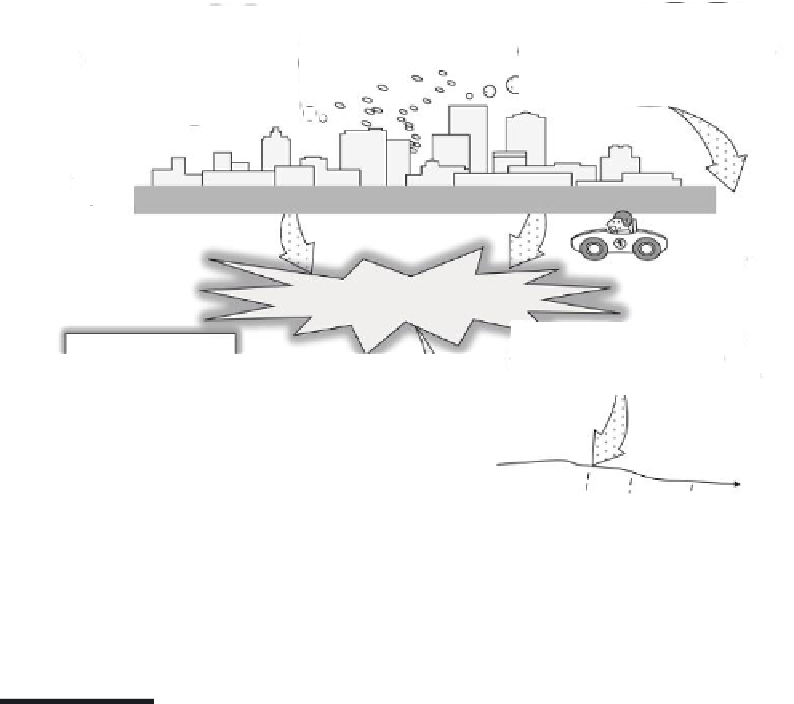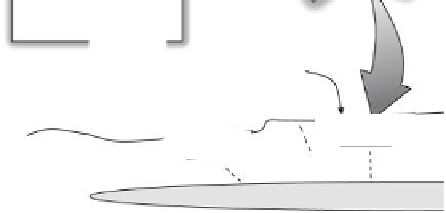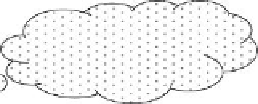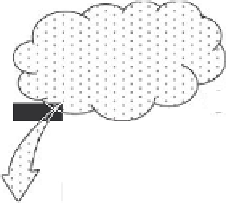Environmental Engineering Reference
In-Depth Information
Incomplete combustion
from cars, buildings
Urbanization
Liquid and solid wastes
Runoff from paved
surfaces into
streams and rivers
Pipeline breaks and
spills of oil and water
Landfills
Aquifer
FIGURE 7.1
Urban sources of contamination and their effect on the geoenvironment.
7.2 Land Uses by Urbanization
Urban development is a major consumer of land. Natural landscape areas around the cities
are converted into housing estates, industrial parks, and other kinds of facilities designed
to serve the community. Land is typically used for housing, businesses, industry, surface
and subsurface infrastructures such as roads, wastewater supply, sewers, and power lines,
and for recreational purposes such as parks and playgrounds. In the United States, it is
estimated that about 100 m
2
of land per second is lost to urban uses; Germany loses about
14 m
2
/s, and Switzerland, a more environmentally aware country, loses about 1 m
2
/s (RSU,
2000). Abandoned industrial lands are not included in the estimates.
In the urban context, surface and subsurface soils may be contaminated and degraded.
They serve a variety of functions, including (a) foundation base for buildings, (b) medium
for plant growth, (c) open spaces, (d) park space, (e) urban gardens, (f) bases for roads, ponds,
and reservoirs, and (g) sources and sinks of contaminants. Soils in urban areas tend to be
more diverse because of the introduction of additives such as buried waste, debris, fuel
ash, and other residues. Assessment of soil impairment requires speciication of intended
use of the soil. Particle size distribution, porosity, erodability, structural stability, hydraulic
conductivity, and rootability are some properties that need to be assessed to determine
the degree of impairment of the soil. For example, if playing ields, under repeated use in
wet conditions are no longer usable for playing, the situation will need to be remediated
















Search WWH ::

Custom Search